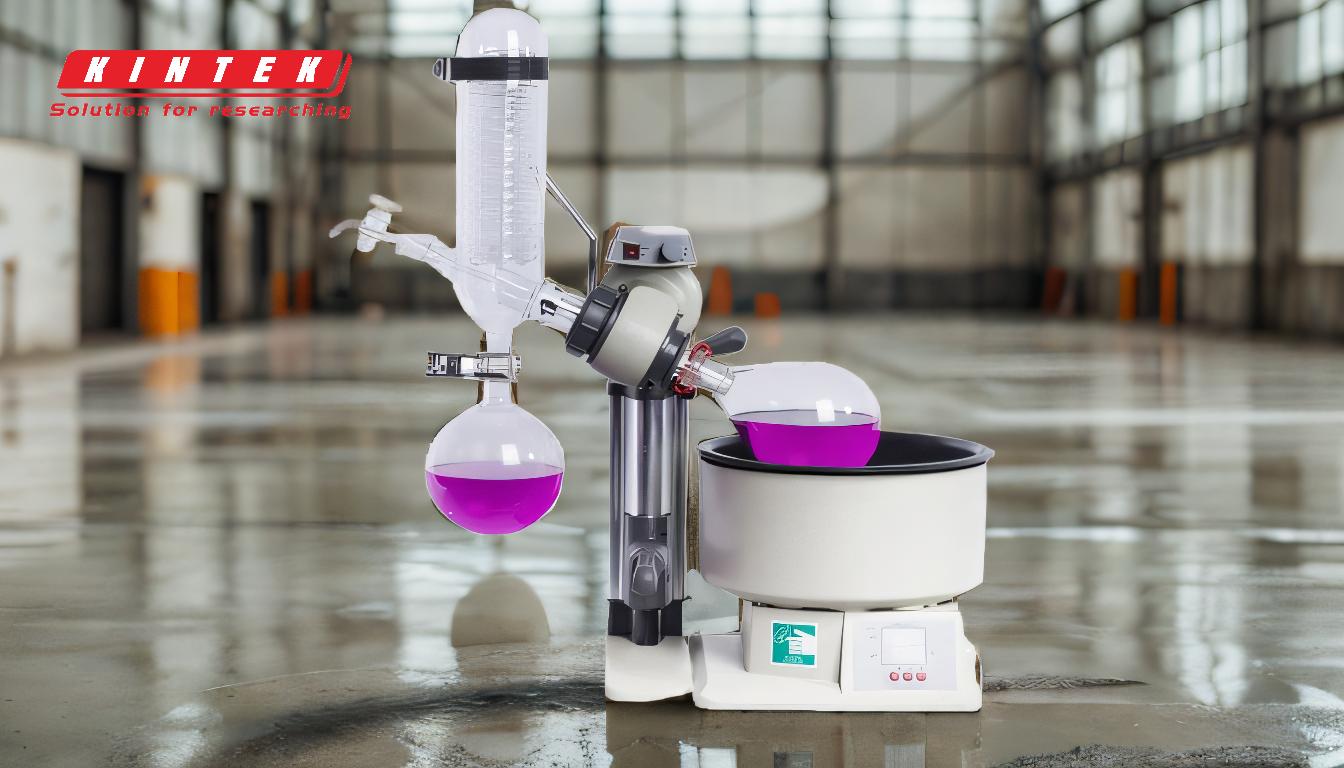The temperature of evaporation in a vacuum depends on the specific material being evaporated and the vacuum conditions. In a high vacuum environment, materials evaporate when their vapor pressure exceeds the surrounding pressure, typically around 1 Pa. For many materials, this requires heating to temperatures between 1000 to 2000 °C, while refractory materials may need temperatures as high as 3000 °C. The evaporation process is also influenced by factors such as vacuum level, heating source, and material properties. In applications like rotary evaporation or molecular distillation, lower temperatures are used, but precise control is necessary to balance evaporation rates and avoid thermal degradation of sensitive materials.
Key Points Explained:

-
Vapor Pressure and Evaporation in a Vacuum:
- Evaporation occurs when the vapor pressure of a material exceeds the surrounding pressure. In a vacuum, this threshold is typically around 1 Pa.
- The required temperature for evaporation depends on the material's vapor pressure curve. For example, metals and refractory materials often require high temperatures (1000–3000 °C) to achieve sufficient vapor pressure.
-
Temperature Ranges for Evaporation:
- Common materials: 1000–2000 °C.
- Refractory materials: Up to 3000 °C.
- These temperatures are necessary to ensure the material's vapor pressure exceeds the vacuum chamber's pressure.
-
Influence of Vacuum Level:
- A high vacuum (10^-7 to 10^-5 mbar) is often required for thermal evaporation processes, such as coating or thin-film deposition.
- Lower pressures reduce the boiling point of materials, allowing evaporation at lower temperatures compared to atmospheric pressure.
-
Applications and Temperature Control:
- In rotary evaporation, lower temperatures (typically below 100 °C) are used for solvents and heat-sensitive materials. The evaporation rate is influenced by factors like water bath temperature, vacuum level, and rotation speed.
- In molecular distillation, temperature control is critical to balance evaporation rates and avoid thermal degradation. Higher temperatures increase evaporation rates but may reduce separation efficiency.
-
Factors Affecting Evaporation Rate:
- Temperature: Higher temperatures increase vapor pressure and evaporation rates.
- Vacuum Level: Lower pressures reduce the boiling point and enhance evaporation.
- Material Properties: Different materials have unique vapor pressure curves, requiring specific temperatures for evaporation.
- Equipment Parameters: In rotary evaporators, factors like vessel size, rotation speed, and condenser efficiency also play a role.
-
Practical Considerations:
- For thermal evaporation in coating processes, precise control of temperature and vacuum is essential to achieve high-quality layers.
- In rotary evaporation, balancing temperature, vacuum, and rotation speed is crucial to avoid damaging heat-sensitive samples.
- In molecular distillation, selecting an economical and reasonable distillation temperature is necessary to optimize both evaporation and separation rates.
By understanding these factors, equipment and consumable purchasers can select the appropriate systems and materials for their specific evaporation needs, ensuring efficient and controlled processes.
Summary Table:
| Factor | Details |
|---|---|
| Vapor Pressure | Evaporation occurs when vapor pressure exceeds surrounding pressure (~1 Pa). |
| Temperature Range | Common materials: 1000–2000 °C; Refractory materials: Up to 3000 °C. |
| Vacuum Level | High vacuum (10^-7 to 10^-5 mbar) reduces boiling points for evaporation. |
| Applications | Rotary evaporation: <100 °C; Molecular distillation: Precise control needed. |
| Key Influences | Temperature, vacuum level, material properties, and equipment parameters. |
Need help selecting the right equipment for your evaporation process? Contact us today for expert guidance!











